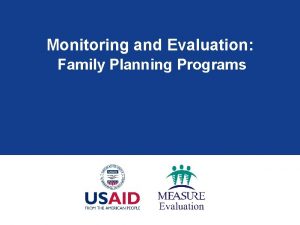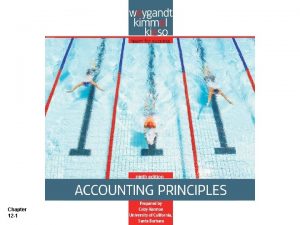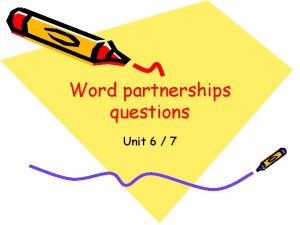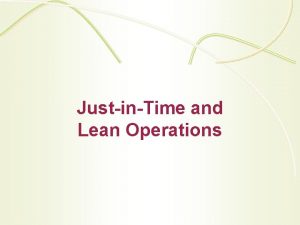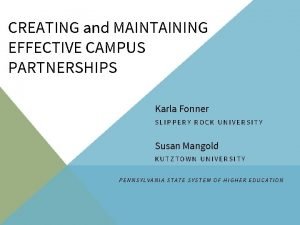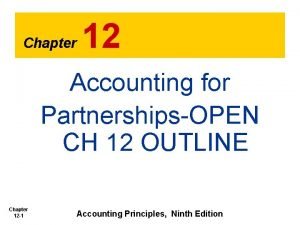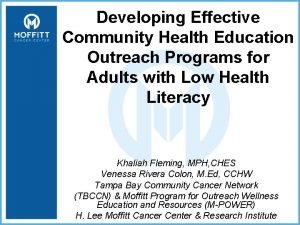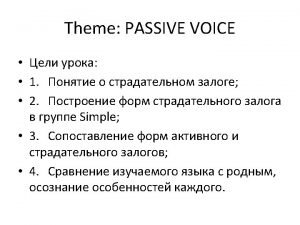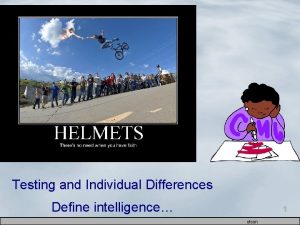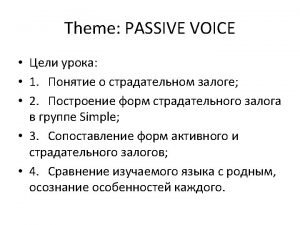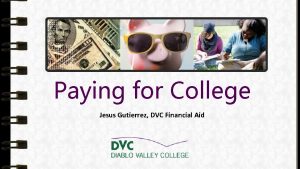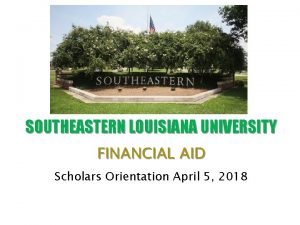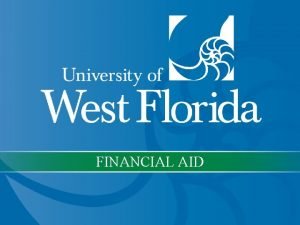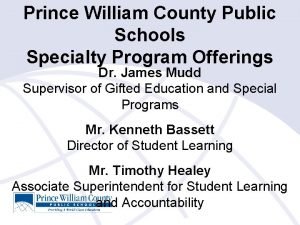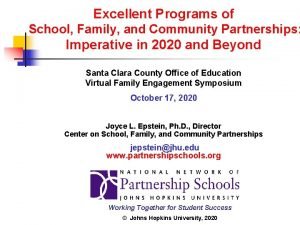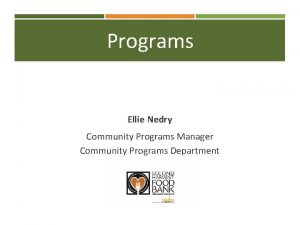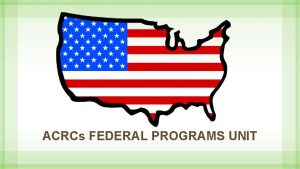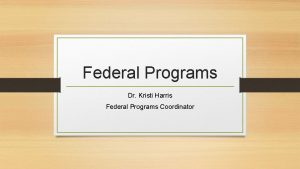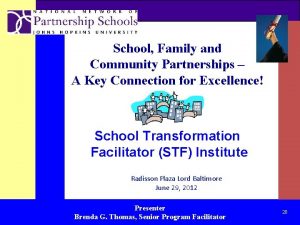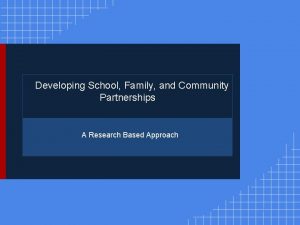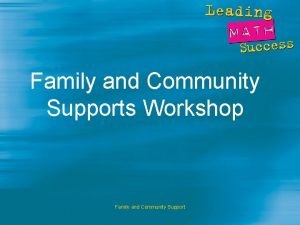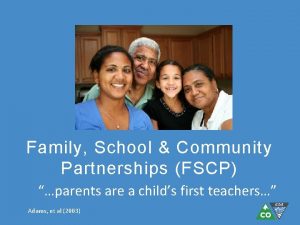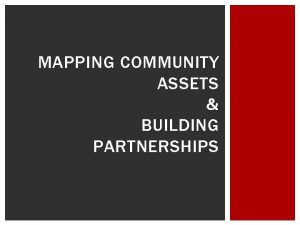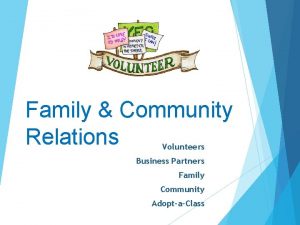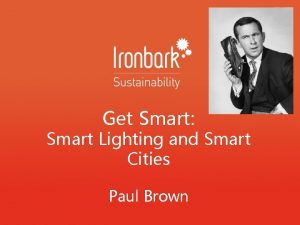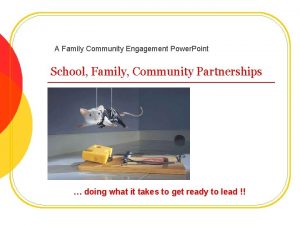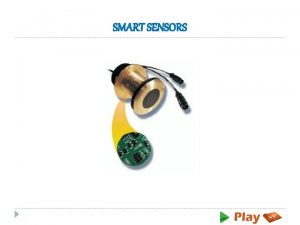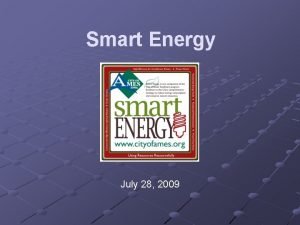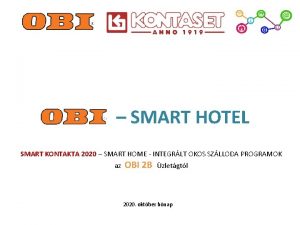School Family and Community Partnerships Federal Programs SMART
























- Slides: 24

******* School, Family, and Community Partnerships Federal Programs

SMART, SAFE Schools • Safe and Nurturing PLACE – Welcoming school environment for ALL – Partnership School – “Family-like” school and “school-like” families – SMART, SAFE school that students, teachers, parents, and others WANT to attend and support

SMART, SAFE Schools • Place where students develop to their full potential and produce positive RESULTS – Academic • Intellectual Development • Curricular and other achievements • Commitment to role of student – Physical • Good nutrition and exercise • Prevention of alcohol, tobacco and drug use • Good attendance – Emotional • Positive attitudes about school • Positive self concept, behavior, relationships • Appreciation of others

SMART, SAFE Schools and Students Schools Families Communities

School , Family, and Community Partnerships • Comprehensive school improvement • Goal-oriented • Customized, comprehensive, and continually improved • “Realities” solutions sought, found, shared • All grade levels • Mothers, fathers, grandparents, foster parents, family community groups, business partners, volunteers, mentors, external partners • Results for ALL students, parents, teachers, and community

Joyce Epstein Model Framework of Six Types of School, Family, and Community Involvement

Epstein’s Six Types of Involvement Parenting Collaborating With Community Communicating Successful Partnerships Decision Making Volunteering Learning At Home Framework expands/redefines/reframes parental involvement

Type 1 Parenting Workshop is not only a meeting at the school building, but also the content of a topic to be viewed, heard, or read at convenient times and varied locations Assist families with parenting and child-rearing skills, understanding child and adolescent development, and setting home conditions that support children as students at each age and grade level Assist schools in understanding families Reprinted with permission: Epstein, J. L. , Sanders, M. G. , Simon, B. S. , Salinas, K. C. , Jansorn, N. R. , & Van Voorhis, F. L. (2002). School, Family, and Community Partnerships: Your Handbook for Action (Second Edition).

Type 2 Communicating not only from school to home but also includes two-way, three-way, and many-way channels that connect schools, families, students, and the community Communicate with families about school programs and student progress through effective school-to-home and home-to-school communications Reprinted with permission: Epstein, J. L. , Sanders, M. G. , Simon, B. S. , Salinas, K. C. , Jansorn, N. R. , & Van Voorhis, F. L. (2002). School, Family, and Community Partnerships: Your Handbook for Action (Second Edition). Thousand Oaks, CA: Corwin Press.

Type 3 Volunteering Volunteer not only those who come to school during the day, but also those who support school goals and children’s learning in any way, at any place, and at any time Improve recruitment, training, work, and schedules to involve families as volunteers and audiences at school or in other locations to support students and school programs Reprinted with permission: Epstein, J. L. , Sanders, M. G. , Simon, B. S. , Salinas, K. C. , Jansorn, N. R. , & Van Voorhis, F. L. (2002). School, Family, and Community Partnerships: Your Handbook fo Action (Second Edition). Thousand Oaks, CA: Corwin Press.

Type 4 Learning at Homework not only means work students do alone, but also interactive activities students share with others at home or in the community, linking schoolwork to real life Help at home means how families encourage, listen, react, praise, guide, monitor, and discuss schoolwork with their children, not how they “teach” children school subjects Involve families with their children in learning activities at home, including homework and other curriculum-related activities and decisions Reprinted with permission: Epstein, J. L. , Sanders, M. G. , Simon, B. S. , Salinas, K. C. , Jansorn, N. R. , & Van Voorhis, F. L. (2002). School, Family, and Community Partnerships: Your Handbook for Action (Second Edition).

Type 5 Decision Making Decision making means a process of partnership—sharing views, solving problems, and taking action toward shared goals, not a power struggle of conflicting ideas Parent leader means a representative who shares information with and obtains ideas from other families and community members, not just a parent who attends school meetings Include families as participants in school decisions, governance, and advocacy through PTA/PTO, school councils, committees, action teams, and other parent organizations Reprinted with permission: Epstein, J. L. , Sanders, M. G. , Simon, B. S. , Salinas, K. C. , Jansorn, N. R. , & Van Voorhis, F. L. (2002). School, Family, and Community Partnerships: Your Handbook for Action (Second Edition).

Type 6 Collaborating with Community not only low/high social or economic qualities, but also strengths/talents available to support students, families, and schools Community not only families with children in the schools, but also all who are interested in and affected by the quality of education Community not only neighborhoods where students’ homes/schools are located, but also all neighborhoods or locations influencing student learning and development Coordinate resources and services for students, families, and the school with businesses, agencies, and other groups, and provide services to the community Reprinted with permission: Epstein, J. L. , Sanders, M. G. , Simon, B. S. , Salinas, K. C. , Jansorn, N. R. , & Van Voorhis, F. L. (2002). School, Family, and Community Partnerships: Your Handbook for Action (Second Edition).

Current Implementation • School Improvement Plans • School Policy and Home School Compact

Action Team for Partnerships Focus on Goals SCHOOL IMPROVEMENT TEAM ACTION TEAM for SCHOOL, FAMILY, and COMMUNITY PARTNERSHIPS Strategic Plan Goal 1 Strategic Plan Goal 2 Strategic Plan Goal 3 Strategic Plan Goal 4 Strategic Plan Goal 5 Draw from the six types of involvement to meet these goals Reprinted with permission: Epstein, J. L. , Sanders, M. G. , Simon, B. S. , Salinas, K. C. , Jansorn, N. R. , & Van Voorhis, F. L. (2002). School, Family, and Community Partnerships: Your Handbook for Action (Second Edition).

Elementary School Example Goal—IMPROVE READING Type Parenting Activity Workshops for parents on various ways to read aloud with young children Communicating Parent-teacher-student conferences on reading goals at the start o the school year and on reading progress midyear Volunteering Reading-partner volunteers, guest readers of favorite stories, other organized, ongoing read-with-me activities and Learning at Weekly interactive reading homework activities for all students to read aloud for a family partner, show links of reading and writing, go Home over vocabulary and spelling words, and other reading activities Decision Making PTA/PTO support for a family room or parent center to provide information on children’s reading, and to conduct book swaps, make book bags for read-at-home programs, create family books, and sponsor other reading activities Collaborating Donations from business partners of books for w/Community classrooms, for the school library, or for children to take home Reprinted with permission: Epstein, J. L. , Sanders, M. G. , Simon, B. S. , Salinas, K. C. , Jansorn, N. R. , & Van Voorhis, F. L. (2002). School, Family, and Community Partnerships: Your Handbook for Action (Second Edition).

Middle School Example Goal—IMPROVE MATH Type Parenting Activity Continuing education classes for family members only or family members and students together (e. g. , computer classes or GED/ABE classes) Communicating Student recognition page in the school newsletter highlighting students who improve and excel in math Volunteering Parents as audience members for “math bowl” or other math competitions Learning at Home Information for parents on students’ math requirements to prepare for entry to postsecondary education Decision Making PTA/PTO support for math with the purchase of manipulatives, calculators, computers, and other materials Collaborating After-school program with local college students w/Community as math tutors Reprinted with permission: Epstein, J. L. , Sanders, M. G. , Simon, B. S. , Salinas, K. C. , Jansorn, N. R. , & Van Voorhis, F. L. (2002). School, Family, and Community Partnerships: Your Handbook for Action (Second Edition).

High School Example Goal—IMPROVE GRADUATION RATES Type Parenting Activity Workshops for parents and students on course credits and requirements for high school graduation, college financial aid, college entry tests, and career planning Communicating Series of videotapes for families to borrow to learn about high school requirements and postsecondary, vocational planning Volunteering Learning at Home Decision Making Field trips for students and parents to local technical institutes, colleges and universities Interactive homework that requires students to discuss and document their academic goals and career plans with a family partner and to outline strategies for reaching these goals A postsecondary planning committee of parents, teachers, and students to implement a series of activities on college and vocational awareness and career options from 9 th to 12 th grade Collaborating Career club for linking students and families with alumni to w/Community foster knowledge and actions on postsecondary opportunities; information on dual enrollment Reprinted with permission: Epstein, J. L. , Sanders, M. G. , Simon, B. S. , Salinas, K. C. , Jansorn, N. R. , & Van Voorhis, F. L. (2002). School, Family, and Community Partnerships: Your Handbook for Action (Second Edition).

One Year Action Plan Document GOAL 1: Improve academic achievement for ALL students while closing achievement gaps Type (1 -6) Parenting Communicating Volunteering Learning At Home Decision. Making Collaboration w/Community Activity (continuing or new) Date of Activity Grade Level(s) What needs to be done for activity & when? Persons in charge and helping What results and how measured?

What Will School, Family, and Community Partnerships Really DO for My School? RESULTS OF RESEARCH For Students • Higher grades and test scores • Increased enrollment in more challenging academic programs • More classes passed and credits earned • Better attendance • Improved behavior at home and at school • Better social skills and adaptation to school

What Will School, Family, and Community Partnerships Really DO for My School? RESULTS OF RESEARCH For Parents • Increased feeling of support from school and other parents • More interactions with other families in school and community activities • More effective responses to student problems • Increased awareness of student progress and how to help student do better • Increased feeling of ownership of school

What Will School, Family, and Community Partnerships Really DO for My School? RESULTS OF RESEARCH For Teachers • Increased respect for families’ strengths and efforts • Greater readiness to involve ALL families in new ways • Increased satisfaction with family involvement and support • More likely to report ALL parents can help their children; less likely to stereotype single parents, poor parents, or those with less education as unable to help

Next Steps? • Training by Dr. Epstein – Administrators – School Improvement Teams – Parents • Membership in National Network of Partnership Schools -Success stories of Promising Partnership Practices from schools -Research studies on effective strategies -TIPS—Teachers Involving Parents in Schoolwork -Tools to evaluate partnership efforts -Publications and products—books, surveys, Power Point CDs to conduct workshops, incentives

Questions
 Overview of software engineering
Overview of software engineering Monitoring and evaluation of family planning programs
Monitoring and evaluation of family planning programs Accounting for partnerships chapter 12 solutions
Accounting for partnerships chapter 12 solutions Adp accenture
Adp accenture Marketing word partnerships
Marketing word partnerships Product development partnerships
Product development partnerships Characteristics of just-in-time partnerships do not include
Characteristics of just-in-time partnerships do not include Maintaining effective partnerships
Maintaining effective partnerships Public partnerships my account registration
Public partnerships my account registration Epsrc prosperity partnerships
Epsrc prosperity partnerships Chapter 12 accounting for partnerships answers
Chapter 12 accounting for partnerships answers Community health education outreach programs
Community health education outreach programs Street smarts vs book smarts
Street smarts vs book smarts Smart two men are
Smart two men are It is not how smart you are it's how you are smart
It is not how smart you are it's how you are smart Everfi module 2 smart shopping answers
Everfi module 2 smart shopping answers It's not how smart you are
It's not how smart you are Kim ung-yong
Kim ung-yong Street smart vs book smart quotes
Street smart vs book smart quotes One smart man he felt smart
One smart man he felt smart Diablo valley college financial aid
Diablo valley college financial aid Summer smart scholarship selu
Summer smart scholarship selu Uwf financial aid office
Uwf financial aid office Sabbath school monthly themes
Sabbath school monthly themes Prince william county high school specialty programs
Prince william county high school specialty programs

